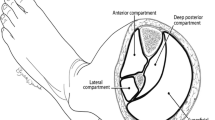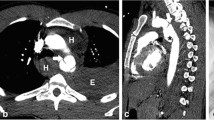Abstract
In the acute care setting, radiologists are frequently asked to assist in the evaluation of patients presenting with signs and symptoms of lower extremity peripheral vascular disease. Non-traumatic peripheral vascular emergencies are most commonly the result of thrombosis, either in a native vessel or within a bypass graft or stent. Arterial emboli, peripheral aneurysm with embolus or thrombosis, and direct arterial trauma are additional, less common causes. Traumatic peripheral vascular emergencies include vessel occlusion, transection, pseudoaneurysms, active extravasation, and arteriovenous fistulas. The high morbidity and mortality associated with acute limb ischemia makes rapid diagnosis and early initiation of therapy critical in the management of such patients. Computed tomographic angiography (CTA) offers the vascular specialist a rapid, widely available, and accurate means to diagnose and grade the extent of vascular disease in the acute care setting. In this pictorial essay, the key elements of lower extremity run-off CTA are reviewed, including relevant anatomy, imaging approach, and spectrum of imaging findings.


















Similar content being viewed by others
References
Norgren L, et al. (2007) Inter-society consensus for the management of peripheral arterial disease (TASC II). J Vasc Surg 45 (Suppl S):S5–67
Walker TG (2009) Acute limb ischemia. Tech Vasc Interv Radiol 12(2):117–129
Cook TS (2016) Computed Tomography Angiography of the Lower Extremities. Radiol Clin North Am 54(1):115–130
Keeling AN, et al. (2011) Technical considerations for lower limb multidetector computed tomographic angiography. Vasc Med 16(2):131–143
Gakhal MS, Sartip KA (2009) CT angiography signs of lower extremity vascular trauma. AJR Am J Roentgenol 193(1):W49–W57
Naidu SG, et al. (2010) Incidence of highly important extravascular findings detected on CT angiography of the abdominal aorta and the lower extremities. AJR Am J Roentgenol 194(6):1630–1634
Lopera JE, et al. (2008) Multidetector CT angiography of infrainguinal arterial bypass. Radiographics 28(2):529–548 (discussion 549)
Foley WD, Stonely T (2010) CT angiography of the lower extremities. Radiol Clin North Am 48(2):367–396, ix
Dawson I, Sie RB, van Bockel JH (1997) Atherosclerotic popliteal aneurysm. Br J Surg 84(3):293–299
Pennywell DJ, Tan TW, Zhang WW (2014) Optimal management of infrainguinal arterial occlusive disease. Vasc Health Risk Manag 10:599–608
Meier GH (2008) Current literature for evidence-based infrainguinal endovascular treatment. Semin Vasc Surg 21(4):210–216
Bradbury AW, et al. (2010) Bypass versus Angioplasty in Severe Ischaemia of the Leg (BASIL) trial: An intention-to-treat analysis of amputation-free and overall survival in patients randomized to a bypass surgery-first or a balloon angioplasty-first revascularization strategy. J Vasc Surg 51(5 Suppl):5S–17S
Iezzi R, et al. (2007) Multi-slice CT (MSCT) angiography for assessment of traumatic lesions of lower limbs peripheral arteries. Emerg Radiol 14(6):389–394
Rieger M, et al. (2006) Traumatic arterial injuries of the extremities: initial evaluation with MDCT angiography. AJR Am J Roentgenol 186(3):656–664
Inaba K, et al. (2006) Multi-slice CT angiography for arterial evaluation in the injured lower extremity. J Trauma 60(3):502–506 (discussion 506–7)
Pieroni S, et al. (2009) Use of 64-row multidetector CT angiography in blunt and penetrating trauma of the upper and lower extremities. Radiographics 29(3):863–876
Kalra N, et al. (2008) MDCT arteriographic spectrum in acute blunt peripheral trauma—a pictorial review. Emerg Radiol 15(2):91–97
Hamilton JD, et al. (2008) Multidetector CT evaluation of active extravasation in blunt abdominal and pelvic trauma patients. Radiographics 28(6):1603–1616
Bozlar U, et al. (2013) CT angiography of the upper extremity arterial system: part 1-anatomy, technique, and use in trauma patients. AJR Am J Roentgenol 201(4):745–752
Chen JK, Johnson PT, Fishman EK (2007) Diagnosis of clinically unsuspected posttraumatic arteriovenous fistulas of the pelvis using CT angiography. AJR Am J Roentgenol 188(3):W269–W273
Author information
Authors and Affiliations
Corresponding author
Ethics declarations
Funding
No external source of funding was used for this study.
Ethical approval
This article does not contain any studies with human participants performed by any of the authors.
Informed consent
For this type of study, formal consent was not required.
Conflict of interest
The authors declare that they have no conflict of interest.
Rights and permissions
About this article
Cite this article
Oweis, Y., Viets, Z. & Shetty, A.S. Role of lower extremity run-off CT angiography in the evaluation of acute vascular disease. Abdom Radiol 42, 1028–1045 (2017). https://doi.org/10.1007/s00261-016-0907-4
Published:
Issue Date:
DOI: https://doi.org/10.1007/s00261-016-0907-4




